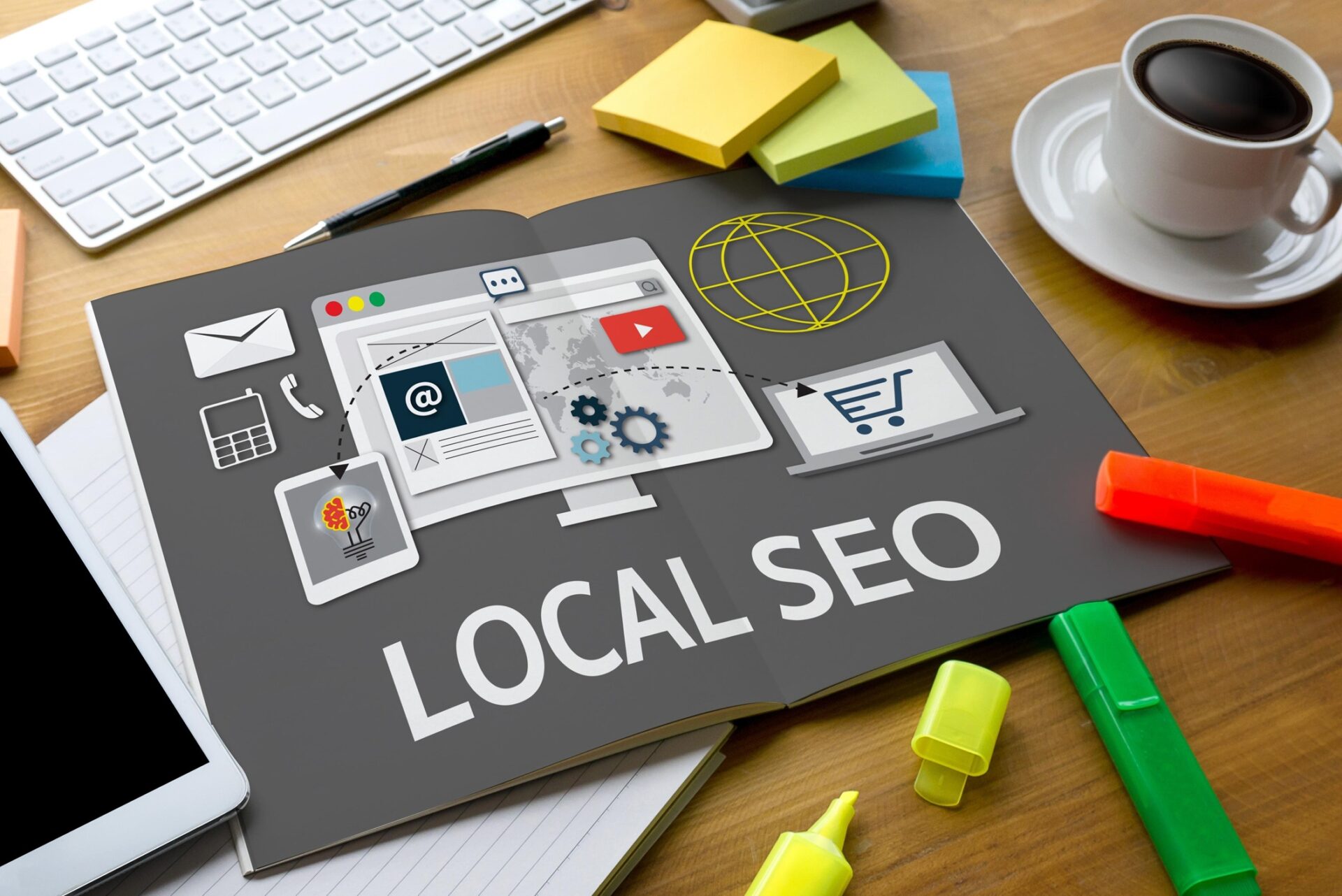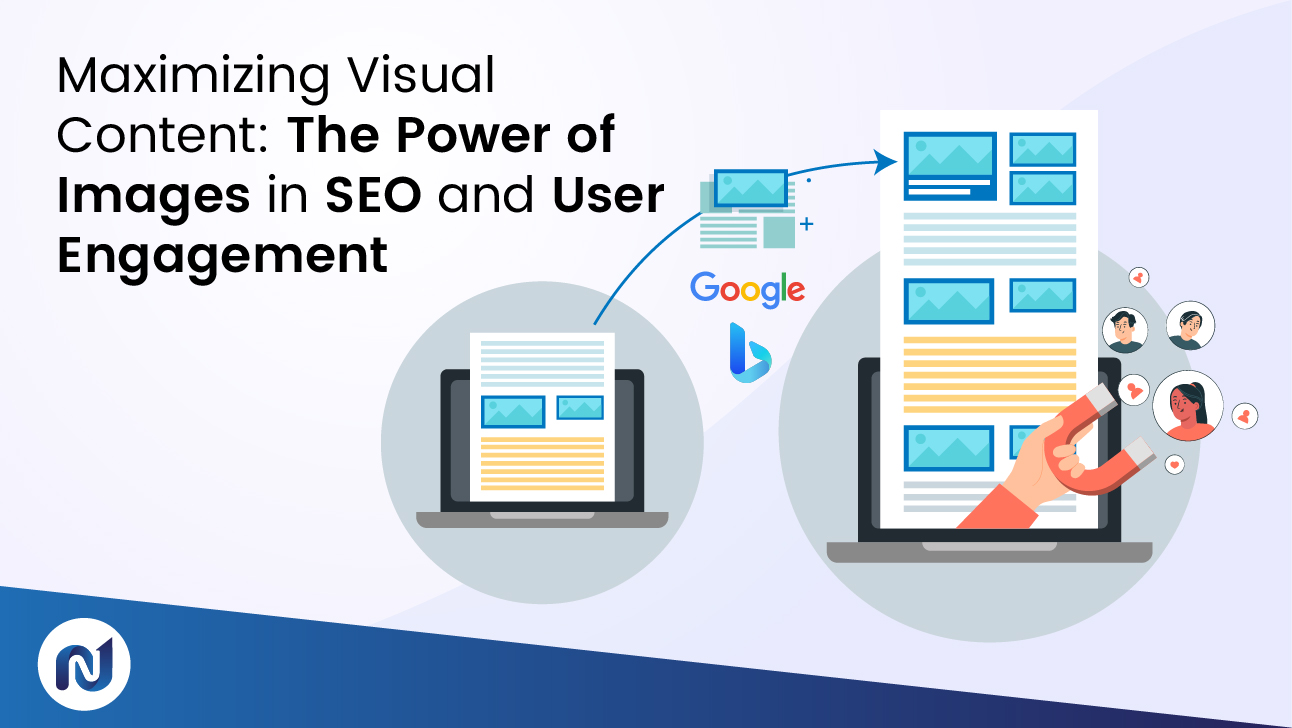
In the bustling digital marketplace, visuals act as beacons that capture attention amidst the noise. They possess the power of silent storytelling, shaping perceptions and influencing decisions even before a single word is read. This visual influence becomes evident when certain websites captivate us, while others leave us scrolling aimlessly. The distinction lies not only in the presence of images but also in the selection of the right ones. Let me share a secret with you: It’s all about having the right images, not just any images.
Table of Contents
- The Science Behind Visual Content
- Why Visuals Matter in Content Marketing
- Key Stats to Consider
- The Pitfalls of Stock Images
- AI-Generated Images: The Future of Visual Content
- Google’s and Bing’s Perspective on Image SEO
- Best Practices for Image SEO
- Image Recommendations for Local Businesses
- Repurposing Visual Assets
- Conclusion
The Science Behind Visual Content
Humans are inherently visual beings. Our brains are designed to process and remember visual information far more effectively than plain text. Dr. Brad Bushman once pointed out that while words can be abstract and challenging for the brain to retain, visuals are concrete and easily remembered. Reflect on a memorable vacation or a significant life event. The exact words spoken might elude you, but the images? They remain vivid in your memory.
Now, consider this: 93% of consumers say that images are crucial to their purchase decision. That’s a staggering number. It underscores the fact that in the business world, visuals aren’t just “nice to have”… they’re essential.
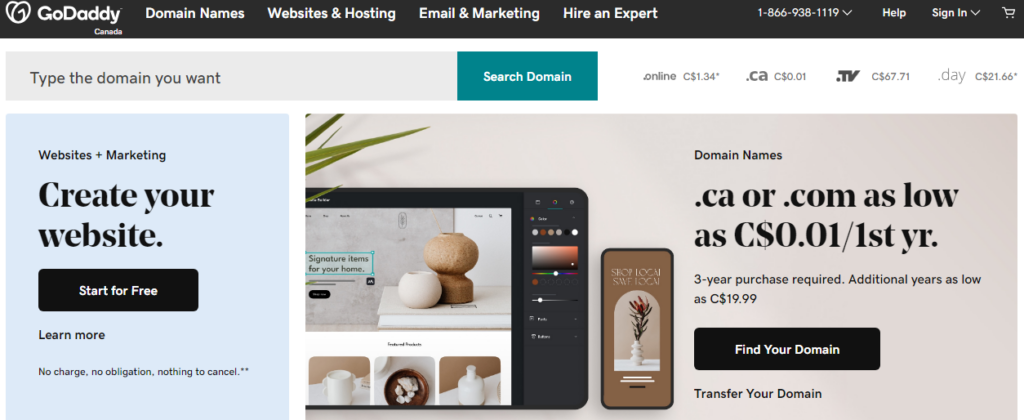
Why Visuals Matter in Content Marketing
In content marketing, visuals are not just decorative elements; they’re powerful tools that can significantly amplify the impact of your content. Here’s why:
- Engagement Boosters: Visuals captivate and engage your audience, pulling them deeper into your content. They act as anchors, ensuring that readers stay longer on your page.
- Digestibility: Large chunks of text can be daunting. Visuals break up the monotony, making content more approachable and easier to digest.
- Emotional Connection: Through visuals, you can convey emotions, set the tone, and even weave a narrative. A single image can evoke feelings that words might take paragraphs to express. This can help to create a more personal connection with your audience and make your content more memorable.
- Social Media Amplifiers: In this age of social media, the right visuals can make your content go viral. They’re shareable, relatable, and can significantly expand your reach. When users share your content on social media, it exposes your brand to a wider audience and helps to build awareness.
Key Stats to Consider
- 📸 75% of consumers are more likely to make a purchase from a website with high-quality images.
- 🚀 Marketers who prioritize visuals often see a surge in their audience size, sales, and overall ROI.
The Pitfalls of Stock Images
While stock images might seem like a quick fix for your visual needs, they come with their fair share of drawbacks:
- Overuse: Stock images are ubiquitous. The same image you choose might have been used by countless other websites, diluting your content’s uniqueness.
- Lack of Originality: Websites with original visuals garner 12% more organic traffic compared to those relying on stock images.
- Trust and Branding: Original images can boost brand awareness by up to 38% and enhance trust with your customers by up to 54%.
Given these factors, it’s evident that while stock photos might be convenient, investing in original visuals pays off in the long run, both in terms of traffic and brand perception.
AI-Generated Images: The Future of Visual Content
Artificial Intelligence (AI) is reshaping the landscape of digital marketing, and one of its fascinating applications lies in the generation of images. Utilizing advanced machine learning models, AI can now produce visuals that are not only captivating but also tailored to specific audiences or niches.
Benefits Of Using AI-Generated Images
- Personalization at Scale: AI can analyze vast amounts of data to discern patterns in user behaviour and preferences. This means it can craft images tailored to specific demographics, enhancing user engagement and relevance.
- Unique and Customized Visuals: Say goodbye to the repetitive and overused stock photos. With AI, businesses can generate unique visuals that align more closely with their brand’s voice and message.
- Cost-Efficiency: While there’s an initial investment in AI tools or services, in the long run, businesses can save on costs associated with hiring graphic designers or purchasing expensive stock images.
- Rapid Production: Need a visual for a last-minute campaign? AI can produce images in a fraction of the time it would take a human designer.
Considerations Before Adoption
- Ethical Implications: The line between AI-generated and human-created content can be blurry. It’s essential to disclose the use of AI in content creation to maintain trust with your audience.
- Quality Control: While AI is powerful, it’s not infallible. Regularly review AI-generated visuals for accuracy and appropriateness.
- Over-Reliance: While AI can be a valuable tool, the human touch in understanding nuances, emotions, and the brand message is irreplaceable. Use AI as a complementary tool, not a replacement.
Incorporating AI-generated images into your website and branding strategy can offer a competitive edge, keeping your visuals fresh, relevant, and engaging. As with any tool, it’s essential to use AI ethically and in tandem with human insight to create a holistic and impactful visual strategy.
Google and Bing’s Perspective on Image SEO
Google and Microsoft Bing, which are leading search engines, understand the invaluable role of visual content. Both are refining their algorithms and displays to present the most relevant and visually appealing search results. In fact, Google has recently updated its machine learning algorithms to prioritize authenticity, making it more crucial than ever for businesses to use genuine and high-quality images. Learn more about why authenticity matters in Google’s machine learning update.
Google’s Approach to Image SEO
Google integrates images to enhance search results in two main ways:
- Contextual Relevance: Google showcases an image pack for visually driven queries, (e.g., interior design ideas), providing users with a richer understanding of the topic.
- Enhanced User Experience: Google is augmenting its image search capabilities for a swift and seamless user experience.
Google’s Recommendations for Image Usage
- Structured Data: Helps direct users to your content and highlight its relevance.
- Image Licensing: Informs users about image usage rights.
- Badges: Google uses badges, like “recipe” or “product”, to aid user searches.
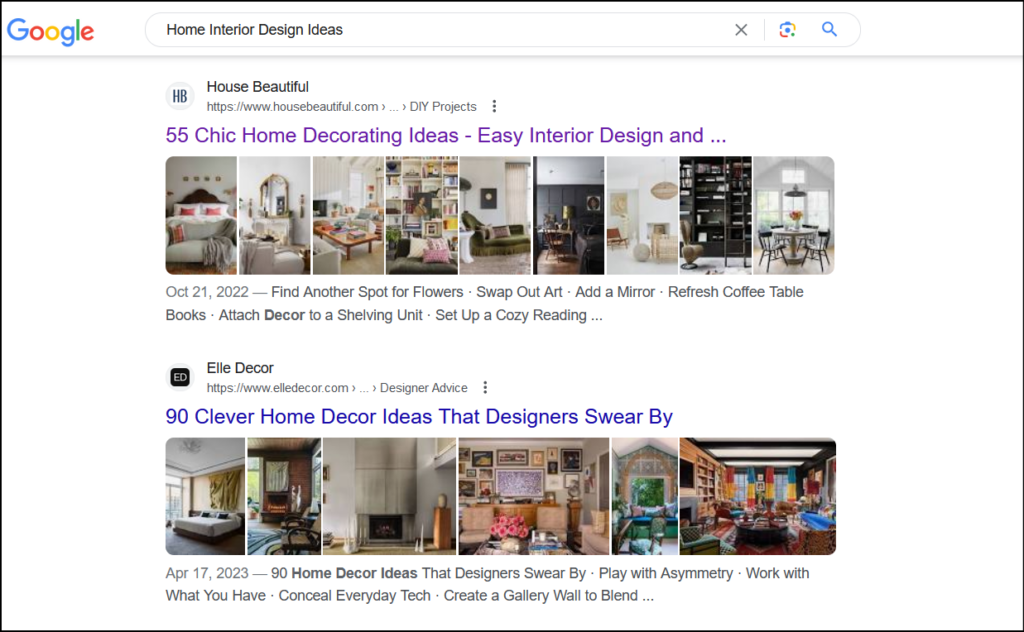
Microsoft Bing’s Approach to Image SEO
Bing offers a “visually immersive” search experience by:
- Recipe Results: Showcasing dish images.
- Image Search’s Similar Looking Items: Suggesting visually analogous images.
- Expandable Search Result Carousels: Offering a broader visual insight into search queries.
- Infographic Knowledge Panels: Presenting information-rich visuals.
- Local Answers Design: Incorporating comprehensive details like Bing Maps, images, and reviews when users seek local information.
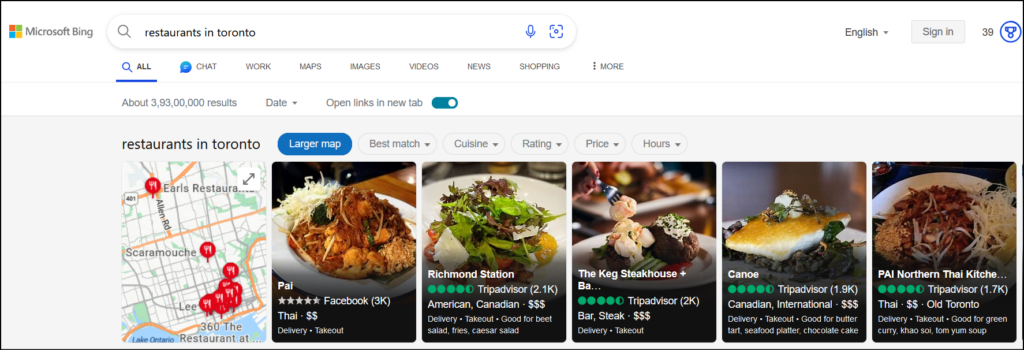
Both search giants recognize images as key to enriching user experience and context. Their continuous evolution signifies the growing need to optimize visual content for search.
Best Practices for Image SEO
Optimizing images for SEO is a multi-faceted process. It’s not just about aesthetics; it’s about functionality, relevance, and user experience. Here are some detailed best practices:
- Relevance: Ensure that your images align with the content’s theme. An irrelevant image can distract and confuse readers.
- Example: If you’re writing about dental hygiene, use images related to dental tools, procedures, or professionals rather than a generic smiling face.
- File Name: Descriptive filenames help search engines understand the image’s context.
- Example: Instead of a vague “IMG001.JPG”, a name like “teeth-whitening-procedure.jpg” is more descriptive and SEO-friendly.
- Dimensions & File Size: Images should be optimized for web viewing. Large files slow down page load times, affecting user experience and SEO. Mention the dimensions, both height and width, in the image HTML element so the browser reserves space in advance accordingly. This will stop website layouts from changing during loading.
- Example: If you have a full-width banner image, ensure it’s compressed without losing quality. Tools like TinyPNG can help with this
- Captions: Captions can provide context, making it easier for readers to understand the image’s relevance. They can also boost SEO when used correctly.
- Example: For an image showcasing a dental procedure, a caption like “Advanced teeth-whitening procedure at XYZ Clinic” can be both informative and SEO-friendly.
- Alt Text and Title Text: Alt text improves accessibility, allowing screen readers to describe the image to visually impaired users. It also helps search engines understand the image’s context.
- Example: For a picture of a dental check-up, an appropriate alt text could be “Dentist examining a patient’s teeth.”
- XML Sitemap: Creating an XML sitemap for images makes your content more crawlable, ensuring search engines index your images.
- Example: Tools like Yoast SEO can help you generate and enrich XML sitemaps with images.
Fun Facts & Stats
- Websites with original images receive 12% more organic traffic than those with stock images.
- Original images can boost brand awareness by up to 38% and enhance trust with customers by up to 54%.
Image Recommendations for Local Businesses
In the competitive landscape of local businesses, standing out is paramount. While quality service and products are essential, the visuals you present to potential customers play a crucial role in setting you apart. Here’s a deep dive into specific image recommendations for different types of local businesses:
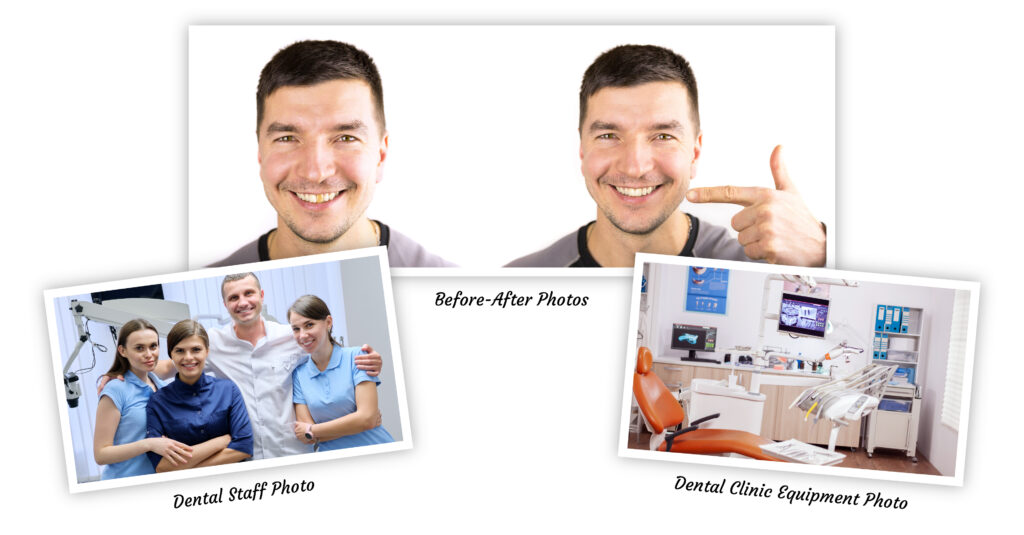
| Business Type | Image Type | Description | Why It’s Effective |
| Dental Clinic | Before-and-After Treatment Photos | Showcases the transformation achieved through your dental treatments. | Builds trust by demonstrating the effectiveness of your services. |
| Team Portraits | Professional photos of your dental team, from receptionists to dentists. | Humanizes your brand and introduces potential clients to the people behind the services. | |
| Clinic Interiors | Welcoming shots of clean, well-lit treatment rooms and waiting areas. | Gives potential clients a feel of the environment, alleviating any anxieties about visiting. |
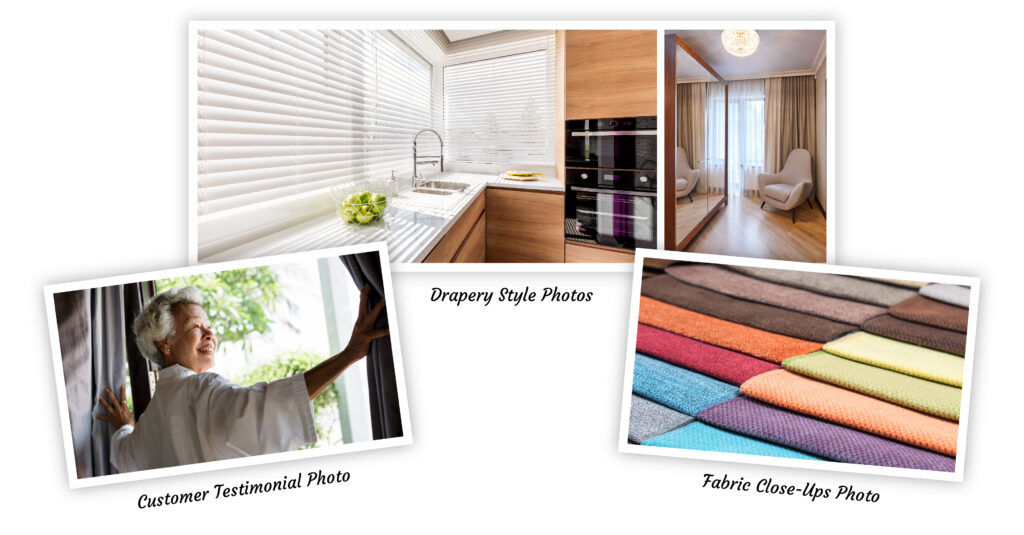
| Business Type | Image Type | Description | Why It’s Effective |
| Window Drapery Showroom | Drapery Styles | High-quality images showcasing various styles and designs available. | Helps customers visualize how the drapery might look in their own spaces. |
| Customer Testimonials | Photos of installed drapery in real customers’ homes, accompanied by their feedback. | Provides social proof and showcases the product in a real-world setting. | |
| Fabric Close-Ups | Detailed shots highlighting the texture, colour, and quality of the fabrics. | Gives customers a tangible sense of the product quality and variety. |

| Business Type | Image Type | Description | Why It’s Effective |
| Family Health Clinic | Facility Tour | Images showcasing different areas of the clinic, from waiting rooms to consultation rooms. | Helps patients familiarize themselves with the clinic environment. |
| Patient Care | Photos of staff interacting with patients, showcasing care and professionalism. | Builds trust and showcases the clinic’s commitment to patient well-being. | |
| Health Workshops | Shots from health awareness workshops or sessions conducted by the clinic. | Demonstrates the clinic’s proactive approach to community health. |
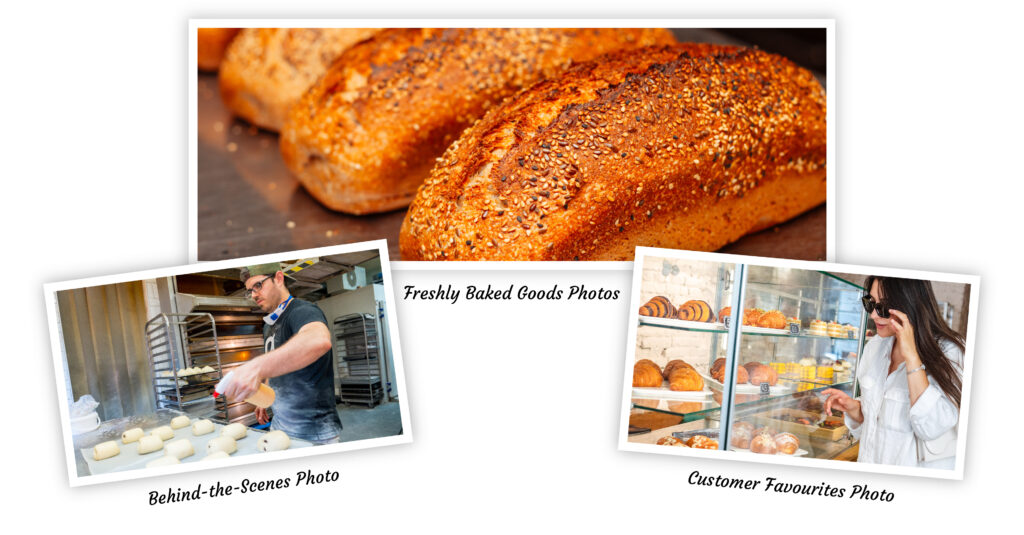
| Business Type | Image Type | Description | Why It’s Effective |
| Local Bakery | Freshly Baked Goods | Close-up shots of freshly baked bread, pastries, and other items. | Entices customers with the allure of fresh, delicious baked goods. |
| Behind-the-Scenes | Images of bakers at work, crafting products. | Humanizes the brand and showcases the craftsmanship behind the products. | |
| Customer Favourites | Photos of best-selling items, possibly with customer reviews. | Provides social proof and guides new customers to popular choices. |
By tailoring your image strategy to the specific nuances of your business and the local market, you can effectively differentiate yourself, build trust, and foster a loyal customer base.
Repurposing Visual Assets
Every business understands the value of original photos. They capture the essence of the brand, resonate authenticity, and build trust. But once you’ve invested in high-quality, original images for your business, how do you maximize their utility without feeling repetitive?
This is where the art of repurposing visual assets shines.
Repurposing isn’t just about reusing; it’s about reimagining. Taking your original photos and adapting them into various formats can amplify their reach and impact. Here’s a roadmap to get the most out of your visual assets:
- Social Media Posts: Crop, edit, or add filters to your original photos to create engaging posts for platforms like Instagram, Facebook, or LinkedIn.
- Infographics: Combine your images with relevant data or statistics about your business. For instance, a restaurant could merge photos of their best-selling dishes with customer reviews or sales data.
- Behind-the-Scenes Videos: Use your images as a foundation for a slideshow-style video, narrating the story behind each shot or showcasing the journey of your brand.
- Interactive Content: Incorporate your photos into quizzes, polls, or interactive web pages. For example, a fashion brand could use images of their clothing in a style quiz.
- Printed Material: Repurpose your images for brochures, flyers, or even business cards. The tangible feel of print can offer a different kind of engagement.
- Webinars or Presentations: Use your images as background visuals or to emphasize key points in your slides.
The essence lies in understanding your audience and the platform. By repurposing your visual assets thoughtfully, you ensure that your brand’s story remains fresh, compelling, and authentic across all touchpoints.
Conclusion
The digital realm is vast, and the competition is fierce. But with the right visuals, you have an ace up your sleeve. They have the power to captivate, to explain, and to persuade. They can transform a mundane piece of content into something memorable. So, whether you’re launching a new website or thinking of giving your old one a makeover, don’t overlook the visuals. They’re not just decorations; they’re investments. Investments that yield impressive returns in terms of engagement, trust, and SEO.
And if you ever find yourself in need of guidance on optimizing your visual content strategy, remember, Numero Uno Web Solutions is just a call away. We’re here to help you harness the full potential of visuals, ensuring your online presence is nothing short of spectacular. Contact Numero Uno Web Solutions today and let’s elevate your digital game together!

